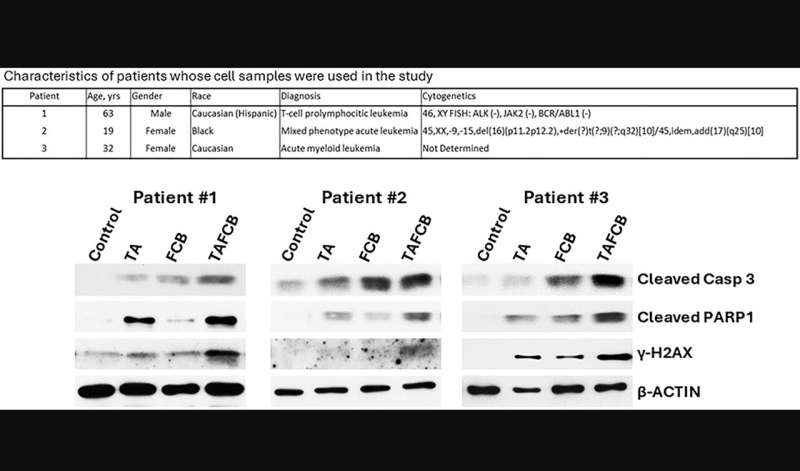This article has been reviewed according to Science X's editorial process and policies. Editors have highlighted the following attributes while ensuring the content's credibility:
fact-checked
peer-reviewed publication
proofread
ABT199/Venetoclax synergism with thiotepa in acute myeloid leukemia (AML) cells

A new research paper titled "ABT199/venetoclax synergism with thiotepa enhances the cytotoxicity of fludarabine, cladribine and busulfan in AML cells" has been published in Oncotarget.
ABT199/venetoclax, an inhibitor of the pro-survival BCL-2 protein, has improved AML treatment. However, its efficacy in hematopoietic stem cell transplantation (HSCT) when combined with other chemotherapeutic drugs has not been thoroughly investigated. In this new study, researchers Benigno C. Valdez, Bin Yuan, David Murray, Jeremy L. Ramdial, Uday Popat, Yago Nieto, and Borje S. Andersson from The University of Texas MD Anderson Cancer Center and the University of Alberta demonstrate the synergistic cytotoxicity of ABT199/venetoclax with the DNA alkylator thiotepa (Thio) in AML cells.
The researchers posit, "The results may provide relevant information for the design of clinical trials using these drugs to circumvent recognized drug-resistance mechanisms when used as part of pre-transplant conditioning regimens for AML patients undergoing allogenic HSCT."
Cleavage of Caspase 3, PARP1 and HSP90, as well as increased Annexin V positivity, suggests potent activation of apoptosis by this two-drug combination; increased levels of γ-H2AX, P-CHK1 (S317), P-CHK2 (S19) and P-SMC1 (S957) indicate an enhanced DNA damage response. Likewise, the increased level of P-SAPK/JNK (T183/Y185) and decreased P-PI3Kp85 (Y458) suggest enhanced activation of stress signaling pathways. These molecular readouts were synergistically enhanced when ABT199/venetoclax and Thio were combined with fludarabine, cladribine and busulfan.
The five-drug combination decreased the levels of BCL-2, BCL-xL and MCL-1, suggesting its potential clinical relevance in overcoming ABT199/venetoclax resistance. Moreover, this combination is active against P53-negative and FLT3-ITD-positive cell lines. Enhanced activation of apoptosis was observed in leukemia patient-derived cell samples exposed to the five-drug combination, suggesting a clinical relevance.
"The results provide a rationale for clinical trials using these two- and five-drug combinations as part of a conditioning regimen for AML patients undergoing HSCT," the researchers conclude.
More information: Benigno C. Valdez et al, ABT199/venetoclax synergism with thiotepa enhances the cytotoxicity of fludarabine, cladribine and busulfan in AML cells, Oncotarget (2024). DOI: 10.18632/oncotarget.28563


















